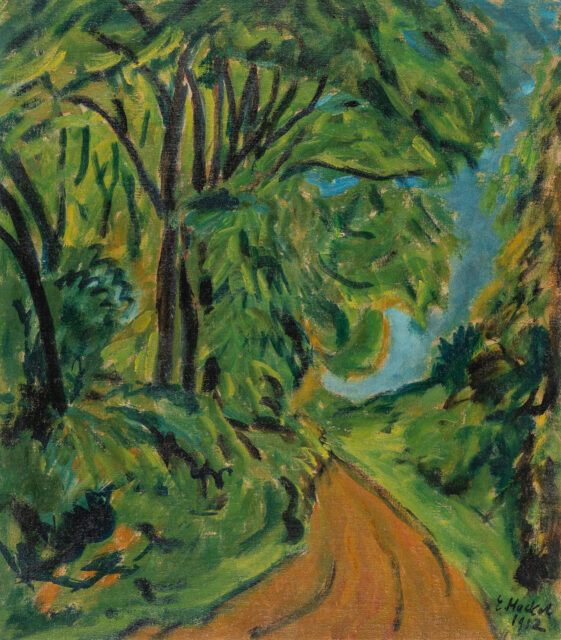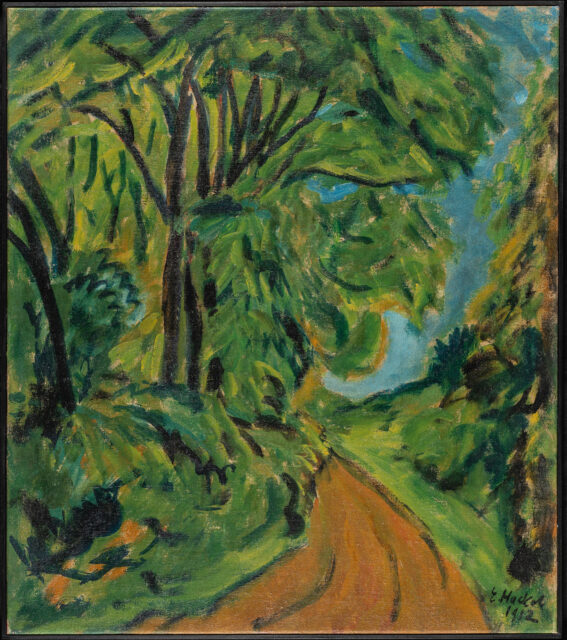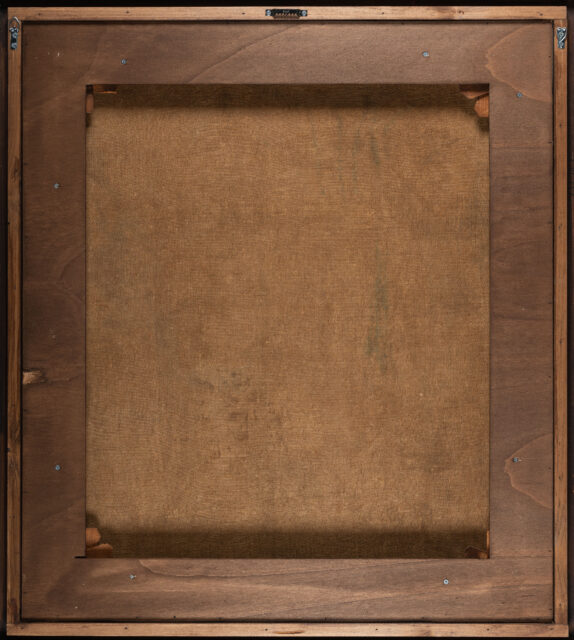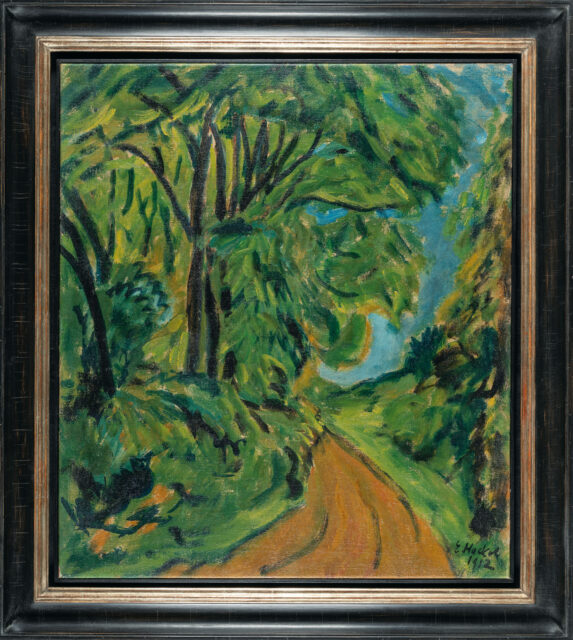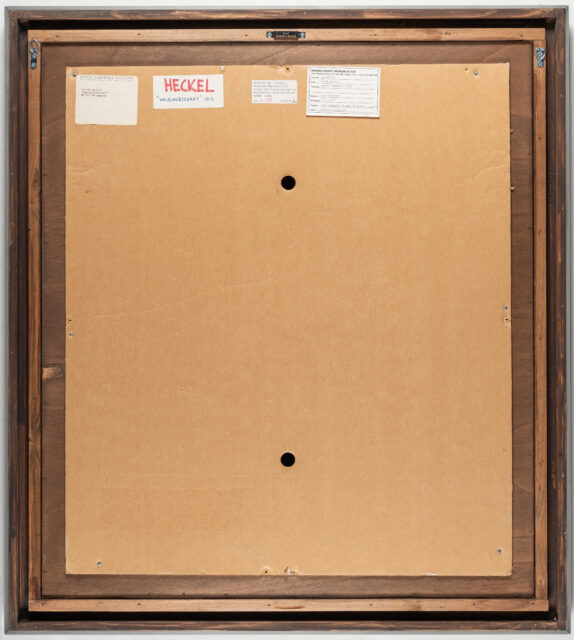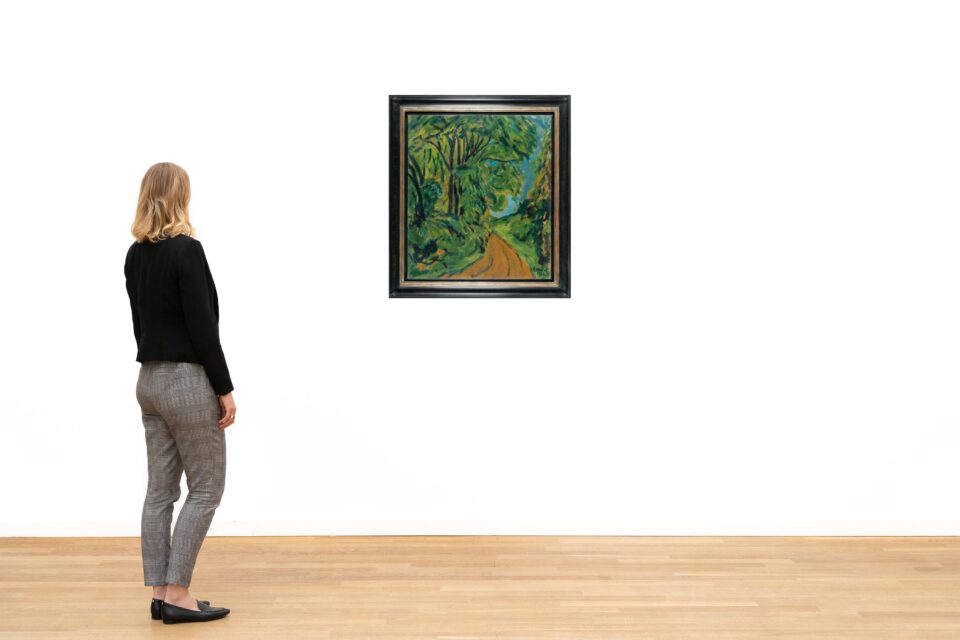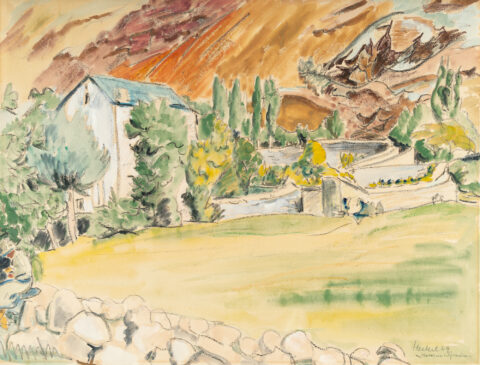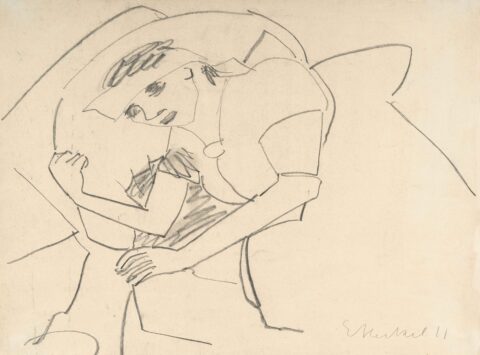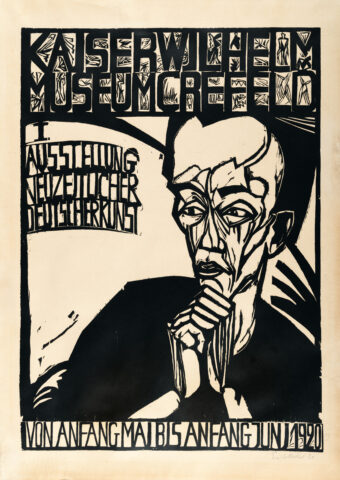
“Waldweg” (Forest path)
Details
Hüneke 1912-14.
Exhibition:
Serge Sabarsky Collection, Munich 1982, cat. no. 38;
Expressionists, Gallery Serge Sabarsky, New York 1984, cat. no. 35, with col. illus. p. 75;
From Kandinsky to Dix. Paintings of the German Expressionists, Nassau County Museum of Art, Roslyn, New York 1989, cat. no. 88, label on verso of frame backing board;
Erich Heckel – The Early Years. Zeichnungen, Aquarelle, Graphik, Städtische Galerie, Bietigheim-Bissingen/Stadt Rosenheim 1995, except cat. no. 88;
Da Kandinsky a Dix. Dipinti dell’Espressionismo Tedesco, Castello Svevo, Bari a.o. 1998, cat. no. 19, with col. Illus. p. 69, label on verso of frame backing board;
Ekspressionisterne fra Serge Sabarsky Samlingen, Kunstforeningen, Copenhagen 2003, cat. no. 25;
Brücke. The Birth of Expressionism in Dresden and Berlin 1905-1913, Neue Galerie, New York 2009, cat. no. 75.
Provenance:
Alfred Flechtheim Gallery, Berlin/Düsseldorf;
Lilly T. Stern Collection, London;
Ketterer, Munich 1.12.1980, lot 658;
Serge Sabarsky Collection/Asset, New York, labelled on the reverse;
Collection/Foundation Vally Sabarsky, New York.
Description
– Dynamic, dense composition in rich green tones from the “Brücke” era
– Expression of the artist’s very own, inner sense of nature with pure landscape
– The work entered the important collections of Lilly T. Stern, director of the Molton Gallery, London, and Serge Sabarsky, New York, via the Flechtheim Gallery
In his “Waldweg” (Forest Path) from 1912, Heckel shows an understanding of nature that can be seen as a copy of both him and the artists’ group he co-founded, “Die Brücke”. The young artist Heckel was studying architecture in Dresden in 1905 when, together with his friends Ernst Ludwig Kirchner, Fritz Bleyl and Karl Schmidt-Rottluff, he founded an association that attempted to rethink art. In the years that followed, other artists, such as Max Pechstein and Emil Nolde, joined the group. Until its dissolution in Berlin in 1913, the group devoted itself to a style characterised by woodcut-like painting methods and subjective depictions of pictorial themes. The subjects of the “Brücke” included themes that until then had not been considered worthy of painting or were even frowned upon. But nature and man as part of nature are also a recurring theme. For example, numerous depictions of landscapes and often naked people in the countryside can be found in the works of the “Brücke” artists.
Erich Heckel himself was no longer a student in Dresden in the year in which the “Waldweg” offered here was created; he was living in Berlin with his partner Milda Frieda Georgi. Whether the “Waldweg” was based on an experience of nature in or around Berlin or whether there was a model for it in nature at all must remain an open question. Impressively, Heckel does not show an identifiable situation, but rather illustrates how he interpreted the subject of the landscape painting for himself – entirely in the spirit of the “Brücke”.
While the landscape was often a means to an end in art history, here the landscape is an end in itself. A path winds its way past trees and bushes, no one is travelling in the blazing sun. What’s more, Erich Heckel is not only depicting a landscape freed of staffage, he is also presenting impetuous nature. Although the path in the lower part of the painting still refers to a man-made landscape, the greenery proliferates and dominates the painting. Heckel does not depict tranquil vegetation in controlled paths; the vegetation itself becomes the protagonist here. Heckel depicts this growth and flourishing subjectively and sensually. Coarsened, angular and reduced to the most important forms, he does not paint nature in a naturalistic or academically composed manner, but rather shows its essence. In many small brushstrokes and without straight lines, the trees and bushes seem to be rustling, visibly growing and conquering the pictorial space. Heckel offers this impetuosity and activity of nature, which is by no means still, sufficient space to unfold and at the same time manages to create a harmonious (albeit energetic) overall composition.
The present painting was created in 1912 at the height of the artists’ group. The group showed their works in the “Sonderbund” exhibition, which is still known today. The aim of the exhibition was to unite the various trends of modernism and present them to the general public. The “Sonderbund” exhibition in Cologne was co-organised by Alfred Flechtheim, for example. He later offered the “Waldweg” in his gallery. The art dealer Flechtheim, one of the most important players on the modern art market in Germany before the Second World War, was an ideal trading partner for Heckel. In the second half of the 20th century, “Waldweg” finally made its way to the USA, where it became part of the collection of the no less famous art dealer and collector Serge Sabarsky, bringing a fresh summer breeze straight from the forest to the Hudson.
* All results incl. buyer’s premium (27%) without VAT. No guarantee, subject to error.
** All post-auction prices excl. buyer's premium and VAT. No guarantee, subject to error.
*** Conditional Sale: The bid was accepted below the limit. Acquisition of the work may still be possible in our post-auction sale.
R = regular taxation
N = differential taxation on works of art which originate from a country outside of the EU
The private or commercial use of images shown on this Website, in particular through duplication or dissemination, is not permitted. All rights reserved.


